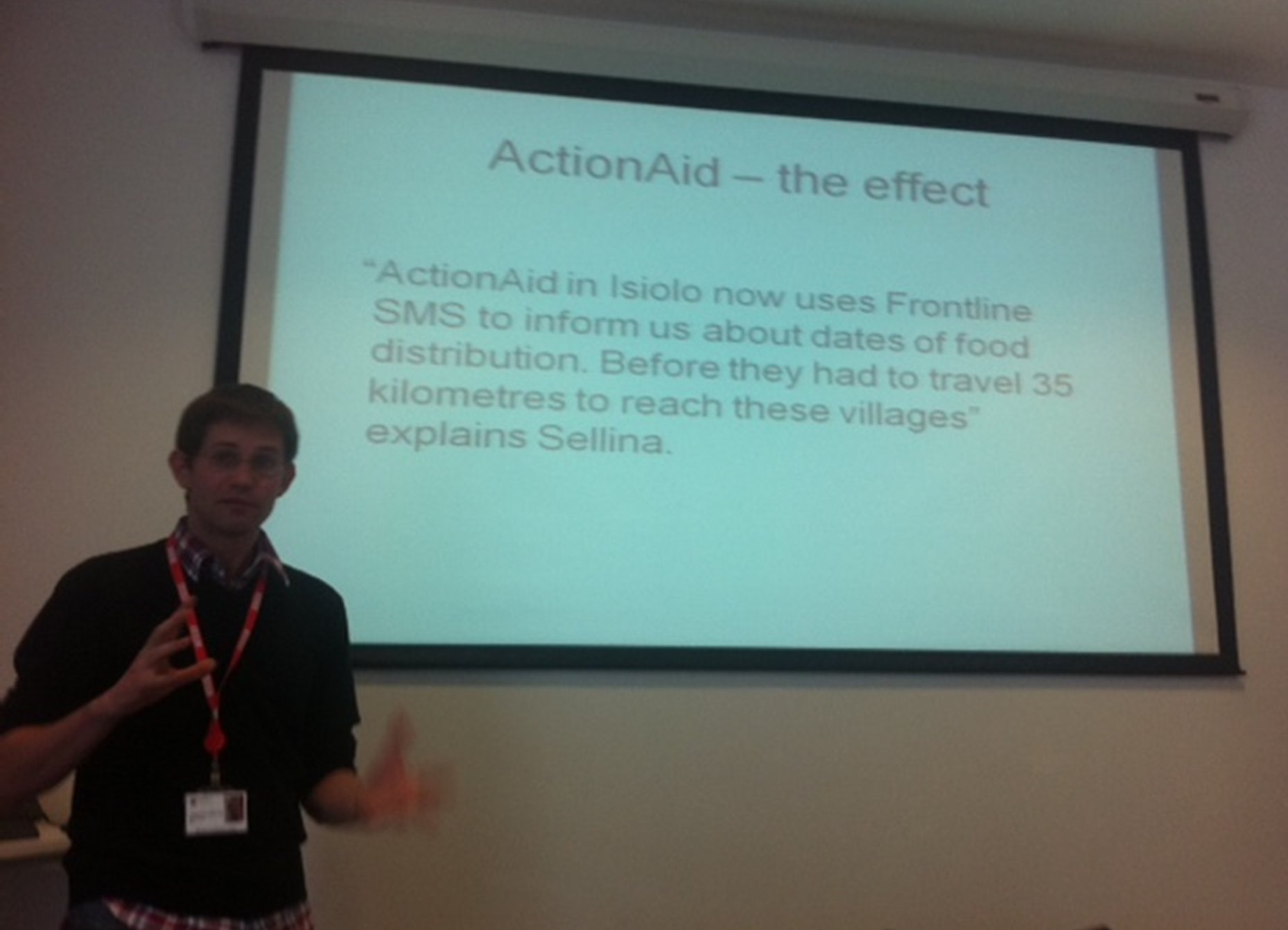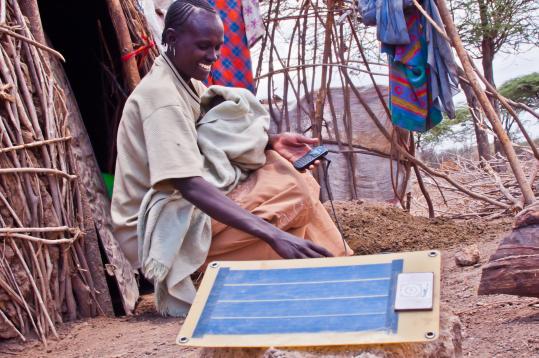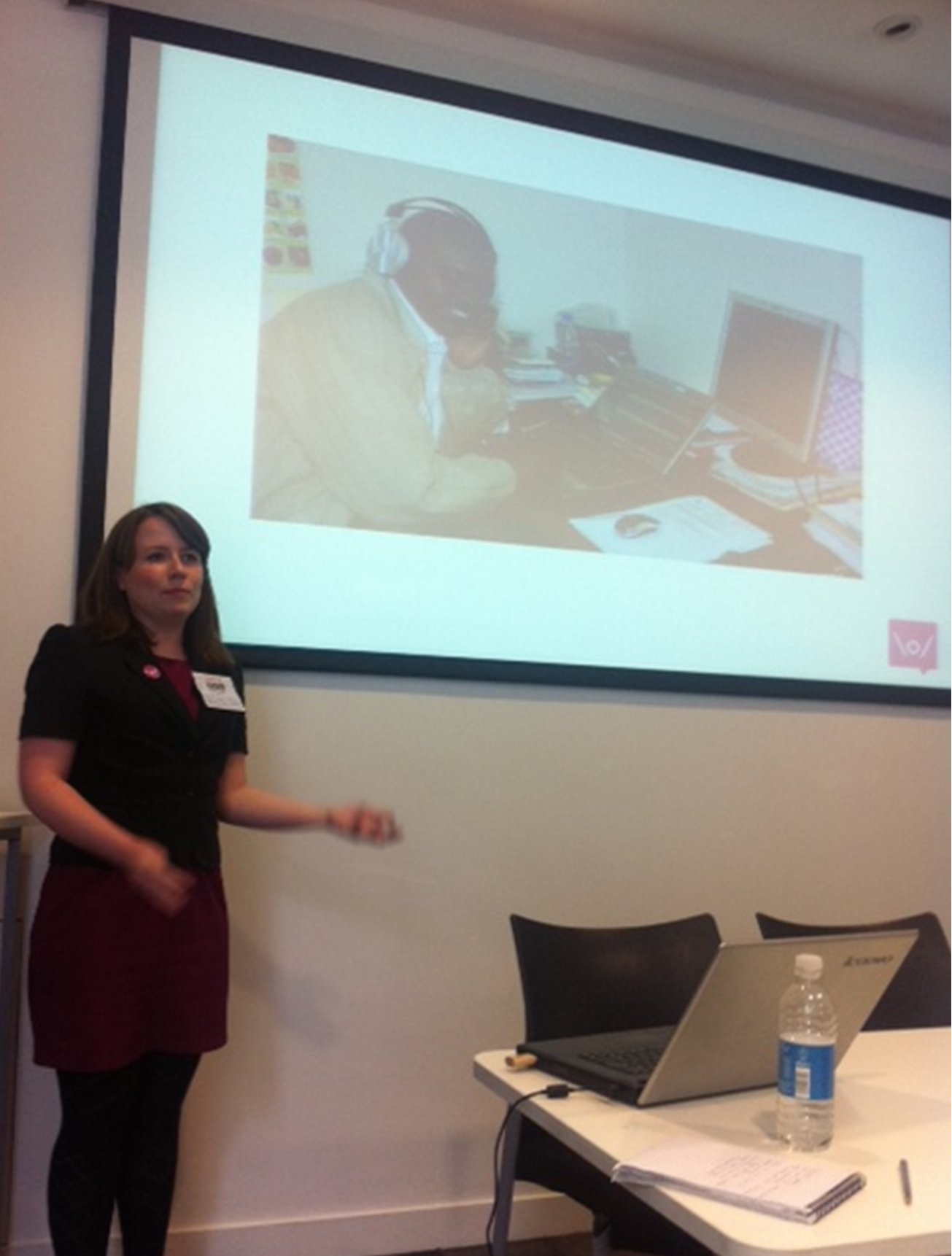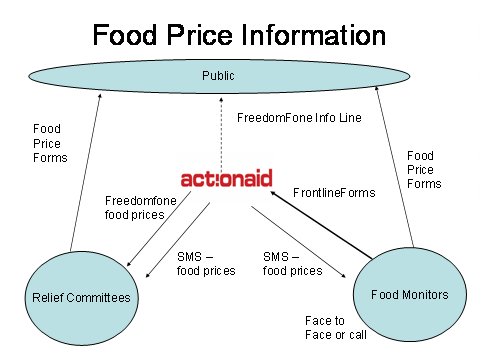In the seventh and final post in our FrontlineSMSat7 series, our CEO Laura Walker Hudson highlights a FrontlineSMS use case that makes her happy - ActionAid's award-winning, bi-continental pilots of FrontlineSMS in Africa and Europe.
Information provides real benefits for drought-hit communities and ActionAid alike
Late last week, ActionAid won a Technology4Good Innovation Award for their work using FrontlineSMS to communicate with staff and communities in Isiolo, Kenya, during the response to the recent drought in the Horn of Africa. Together with our partners, Infoasaid, who supported the deployment, we are very proud to be associated with their ground-breaking and crucial work. Bravo ActionAid!
Below is an extract from a blog post describing the programme and the impact FrontlineSMS has had - you can read the full post here.
When disasters strike, people need information as much as they need shelter, water and safety. By providing, the right information, at the right time, from the right source, lives and livelihoods can be saved.
At the same time, if people have access to useful information during disasters they can make their own choices and decisions, and become more active participants in the process of their own recovery and claiming their rights. They can feed back, complain, voice their opinions and, in doing so, hold agencies like ActionAid - and other bodies like local and national government - to account.
Since May 2011, ActionAid has been partnering with a consortium called infoasaid to mainstream communications with disaster-affected communities in our emergency preparedness and response.
As part of the partnership, ActionAid is implementing a pilot project in Isiolo, Kenya, where ActionAid (in collaboration with the World Food Programme) provides vital food rations to over 80,000 people every month. Distribution of the supplies is handled by community members themselves through self-organised “Relief Committees”, and overseen by Food Monitors employed by ActionAid.
Broadly, the project aims to help combat food insecurity amongst communities affected by last year’s drought. It uses innovative technology – FrontlineSMS and Freedom Fone – to transmit information simultaneously to multiple recipients from a laptop computer, and to provide a channel for communities to feed back to ActionAid staff.
The project provided basic mobile phone and solar chargers to 250 Relief Committee members, and 30 Jave-enabled mobile phones to ActionAid Food Monitors, regional office staff and others including warehouse owners and food truck drivers.
A recent review of the project found that it had brought benefits for both drought-affected communities and ActionAid, by;
Boosting household income
Edward, Relief Committee Secretary: “A man asked ‘how is the livestock price in Isiolo?’ I told him it is lower, he immediately called people in Nanyuki so that they could go to buy [in Isiolo] and sell in other towns. He bought so he could sell at higher price.”
Improving relations between communities and ActionAid
Fatumah, ActionAid Food Monitor: “We used to argue. The community wanted to know why I had not told them about the distribution dates. Now they have time to prepare. Within 30 minutes we are done. Before we had to ask neighbouring villages to help with off-loading - that could take 2-3 hours.”
Increasing the speed and efficiency of food distribution
Community member in Oldonyiro: "There is a big change now. Long before, food used to stay overnight because there was no communication. Now we get information immediately even when the trucks are still in Isiolo. We are aware that food is arriving tomorrow, and we go ready for distribution."
Food Monitors also report that the use of Frontline SMS has reduced the need for frequent travel to rural communities for face-to-face meetings – in one case from 24 per month to just 12 – saving time and money.
Enabling community members to better plan their time
Halima, community member: “In the past we saw the [food] trucks arriving and we might have gone to attend to other works. Now, we get [information] one or two days before, we can put off our jobs and come to collect food.”
Providing information on when food distributions will arrive means children no longer have to leave school to tell parents the trucks are on the way, as was the case previously.
Enabling communities to link with the outside world
Salesa, community member: “When one [child] was bitten by the snake we used the phone to call the vehicle to help take them to hospital.”
Improving the speed and efficiency of data collection
Thomas, Food Monitor: “The Frontline SMS forms are very easy to fill. They do not consume even 10 minutes. The information goes to the hub and…it is secure. Before, I gave the information on paper which can disappear.”
Context is King: Knowledge Sharing on Communications Tools at BBC Media Action
 By Amy O’Donnell, FrontlineSMS:Radio Manager
By Amy O’Donnell, FrontlineSMS:Radio Manager
Recently my colleague Flo and I visited BBC Media Action for a Knowledge Sharing session which focused on the use of innovative mobile technology to enable effective communication for social change. BBC Media Action (previously known as the World Service Trust) "uses media and communication to provide access to information and create platforms to enable some of the poorest people in the world to take part in community life. With a focus on programming that directly engages people in debate and discussion thereby encouraging communication across political, ethnic, religious and other divides in society." We felt lucky to be one of the last visitors to their longstanding home in the iconic Bush House, London as the BBC is relocating from there after 70 years.
Often when people first hear about FrontlineSMS, it’s not just the software which inspires them, but the valuable lessons we learn from how the tool is being used. BBC Media Action works to directly engage people in debate and discussion through programming and this workshop explored the potential of SMS to open up participation.
To broaden participation, combine accessible communications channels
We explored how a radio station in Uganda is using FrontlineSMS to gather incoming audience feedback via SMS to put their questions to MPs while on-air; how FrontlineSMS is engaging citizen journalists in Indonesia and how the software is being used to run a news service for women in Sri Lanka. Introducing another popular open-source platform, we explained how the Ushahidi mapping tool was used in conjunction with FrontlineSMS for election monitoring by the Reclaim Naija project in Nigeria last year to illustrate reports in relation to their location. Many of these programs use SMS in concert with other platforms, whether radio, TV or the Internet - an important element of building a truly accessible, system that works for its unique context.

BBC Media Action’s own Jonathan Robertshaw shared his experience of using FrontlineSMS as a practitioner. He explained BBC Media Action’s role in a project run by ActionAid and infoasaid which which set up a food distribution alert and food price information system in Kenya in the aftermath of the 2011 drought. The project successfully took a multi-platform approach to improving communication between relief committees, food monitors and the public. The set-up gave people options, including voice (using an interactive voice-based software called FreedomFone); detailed SMS-based data collection (using FrontlineForms, FrontlineSMS’ data collection tool); and text message (using FrontlineSMS’s core platform).
Technology is 10% of the solution
As the discussion with different Media Action project leaders delved into program specifics, we explored how technology often only represents a small proportion of overall project design. Looking at potential Media Action projects - including participatory audio dramas and humanitarian radio - reinforced how important it is not to lose sight of behavioral and cultural factors as well as critical delivery planning: outreach, messaging, integration, translation, verification and impact monitoring. One of the group asked how to anticipate the resources required to run a communication platform. Particularly when the volume of response depends on the level of interactive behavior, the group agreed there is no “one-size-fits-all” or “magic formula.” Program staff have to consider the context and stay flexible, tweaking the system to respond to the needs of their beneficiaries and staff as they develop. Resourcing this kind of responsiveness is critical and difficult, and there are costs in money and goodwill involved in introducing people to a new system, changing messages and systems too often. The group agreed that, rather than committing to services which it may be difficult to estimate demand for, organizations should manage expectations and try to test ahead of time. Trying out communications in small trials or pilots can help scope people’s reactions.
The strongest message we took away from the session was practitioners’ motivation to learn about the different tools available in the communications toolkit. Often the design of a communication system is not about one tool, but the right tool or right combination of tools which suit the context. FrontlineSMS needs limited support and people are implementing projects all over the world using the software and tools readily available to them without requiring our team’s direct involvement. We're proud of how much that makes it a really sustainable piece of software for organizations working in the last mile, and a critical tool for long-term capacity-building.





